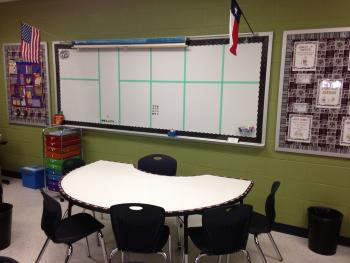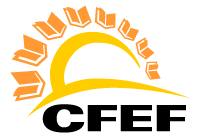
FIND IT FUND IT FLORIDA
Write it out

- School:
- Blue Lake Elementary School
- Subject:
- Other
- Teacher:
- Alyssa Chertcow
- Students Impacted:
- 85
- Grade:
- Pre K - 5
- Date:
- September 11, 2023
6% Funded
Only $782.00 Needed
Goal
The white board kidney table will boost student creativity, encourage visible thinking, increase student engagement, provide learning zone differentiation and create a flexible learning environment. It will be used daily with students from grades pre-kindergarten to 5th grade during speech and language therapy to target goals and curriculum standards.
What will be done with my students
This kidney table will be located in my speech room available to the 85 students served at Blue Lake Elementary. Every time my students come into my room to receive speech and language services they will be able to utilize the white board kidney table to help meet their speech and language goals (per their IEP) and work on several Florida Curriculum Standards.
The students will be able to write on the table for a variety of functions. For example, writing answers to questions and collecting their own data. Students will be able to use the table to perform phonological awareness tasks such as substituting, decoding, blending and segmenting words/sounds. Students can use the table to create grammatically correct sentences targeting vocabulary words. Students can also use the table to create word webs to help with vocabulary acquisition. The possibilities for the white board kidney table are endless and can be used from year to year from student to student.
Benefits to my students
I will incorporate this table in my speech and language therapy sessions with my students (PK-5th grade - approx. 85 students). This lesson will support the follow Florida Curriculum Standards:
LAFS.K.RF.2.2 Demonstrate understanding of spoken words, syllables, and sounds (phonemes).
a. Recognize and produce rhyming words.
b. Count, pronounce, blend, and segment syllables in spoken words.
c. Blend and segment onsets and rimes of single-syllable spoken words.
d. Isolate and pronounce the initial, medial vowel, and final sounds
(phonemes) in three-phoneme (consonant-vowel-consonant, or CVC)
words. (This does not include CVCs ending with /l/, /r/, or /x/.)
e. Add or substitute individual sounds (phonemes) in simple, one-syllable
words to make new words.
LAFS.K.RF.3.3 Know and apply grade-level phonics and word analysis skills in decoding words.
a. Demonstrate basic knowledge of one-to-one letter-sound correspondences by producing the primary or many of the most frequent sound for each consonant.
b. Associate the long and short sounds with the common spellings
(graphemes) for the five major vowels.
c. Read common high-frequency words by sight (e.g., the, of, to, you, she,
my, is, are, do, does).
d. Distinguish between similarly spelled words by identifying the sounds of
the letters that differ.
LAFS.1.RF.2.2 Demonstrate understanding of spoken words, syllables, and sounds
(phonemes).
a. Distinguish long from short vowel sounds in spoken single-syllable words.
b. Orally produce single-syllable words by blending sounds (phonemes),
including consonant blends.
c. Isolate and pronounce initial, medial vowel, and final sounds (phonemes)
in spoken single-syllable words.
d. Segment spoken single-syllable words into their complete sequence of
individual sounds (phonemes).
LAFS.5.L.2.3: Use knowledge of language and its conventions when writing, speaking, reading, or listening.
LAFS.1.RF.3.3 Know and apply grade-level phonics and word analysis skills in decoding
words.
a. Know the spelling-sound correspondences for common consonant
digraphs.
b. Decode regularly spelled one-syllable words.
c. Know final -e and common vowel team conventions for representing long
vowel sounds.
d. Use knowledge that every syllable must have a vowel sound to determine
the number of syllables in a printed word.
e. Decode two-syllable words following basic patterns by breaking the words
into syllables.
f. Read words with inflectional endings.
g. Recognize and read grade-appropriate irregularly spelled words.
LAFS.1.SL.2.5 Add drawings or other visual displays to descriptions when appropriate to
clarify ideas, thoughts, and feelings.
LAFS.1.L.1.1 Demonstrate command of the conventions of standard English grammar and
usage when writing or speaking.
a. Print all upper- and lowercase letters.
b. Use common, proper, and possessive nouns.
c. Use singular and plural nouns with matching verbs in basic sentences
(e.g., He hops; We hop).
d. Use personal, possessive, and indefinite pronouns (e.g., I, me, my; they,
them, their, anyone, everything).
e. Use verbs to convey a sense of past, present, and future (e.g., Yesterday I
walked home; Today I walk home; Tomorrow I will walk home).
f. Use frequently occurring adjectives.
g. Use frequently occurring conjunctions (e.g., and, but, or, so, because).
h. Use determiners (e.g., articles, demonstratives).
i. Use frequently occurring prepositions (e.g., during, beyond, toward).
j. Produce and expand complete simple and compound declarative,
interrogative, imperative, and exclamatory sentences in response to
prompts.
LAFS.1.L.1.2 Demonstrate command of the conventions of standard English capitalization,
www.FLStandards.org | #FLStandards
© 2014, Florida Department of Education. All Rights Reserved.
punctuation, and spelling when writing.
a. Capitalize dates and names of people.
b. Use end punctuation for sentences.
c. Use commas in dates and to separate single words in a series.
d. Use conventional spelling for words with common spelling patterns and
for frequently occurring irregular words.
e. Spell untaught words phonetically, drawing on phonemic awareness and
spelling conventions.
LAFS.K.L.3.4 Determine or clarify the meaning of unknown and multiple-meaning words and phrases
based on kindergarten reading and content.
a. Identify new meanings for familiar words and apply them accurately (e.g.,
knowing duck is a bird and learning the verb to duck).
b. Use the most frequently occurring inflections and affixes (e.g., -ed, -s, re-, un-,
pre-, -ful, -less) as a clue to the meaning of an unknown word.
LAFS.K.L.3.5 With guidance and support from adults, explore word relationships and nuances in word
meanings.
a. Sort common objects into categories (e.g., shapes, foods) to gain a sense of
the concepts the categories represent.
b. Demonstrate understanding of frequently occurring verbs and adjectives by
relating them to their opposites (antonyms).
c. Identify real-life connections between words and their use (e.g., note places at
school that are colorful).
d. Distinguish shades of meaning among verbs describing the same general
action (e.g., walk, march, strut, prance) by acting out the meanings.
Budget Narrative
The budget includes a whiteboard kidney table, expo markers, white board cleaner and white board erasers.
Items
| # | Item | Cost |
|---|---|---|
| 1 | Kidney Whiteboard Activity Table | $756.00 |
| 2 | EXPO Low Odor Dry Erase Markers-36 count | $29.00 |
| 3 | Set of 18 Small White Board Dry Erase Boards | $30.00 |
| 4 | EXPO White Board Care Dry Erase Wipes | $17.00 |
| Total: | $832.00 |
6% Funded
Only $782.00 Needed





Share
Please share this page to help in fulfilling this grant.
Email to a Friend